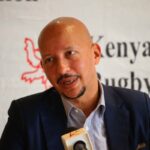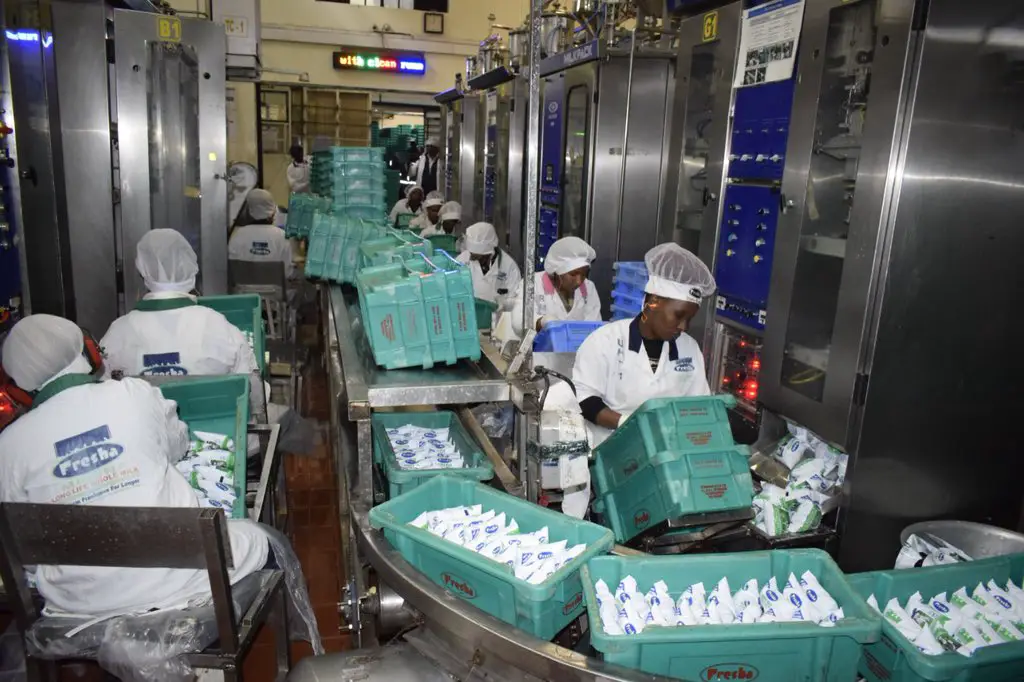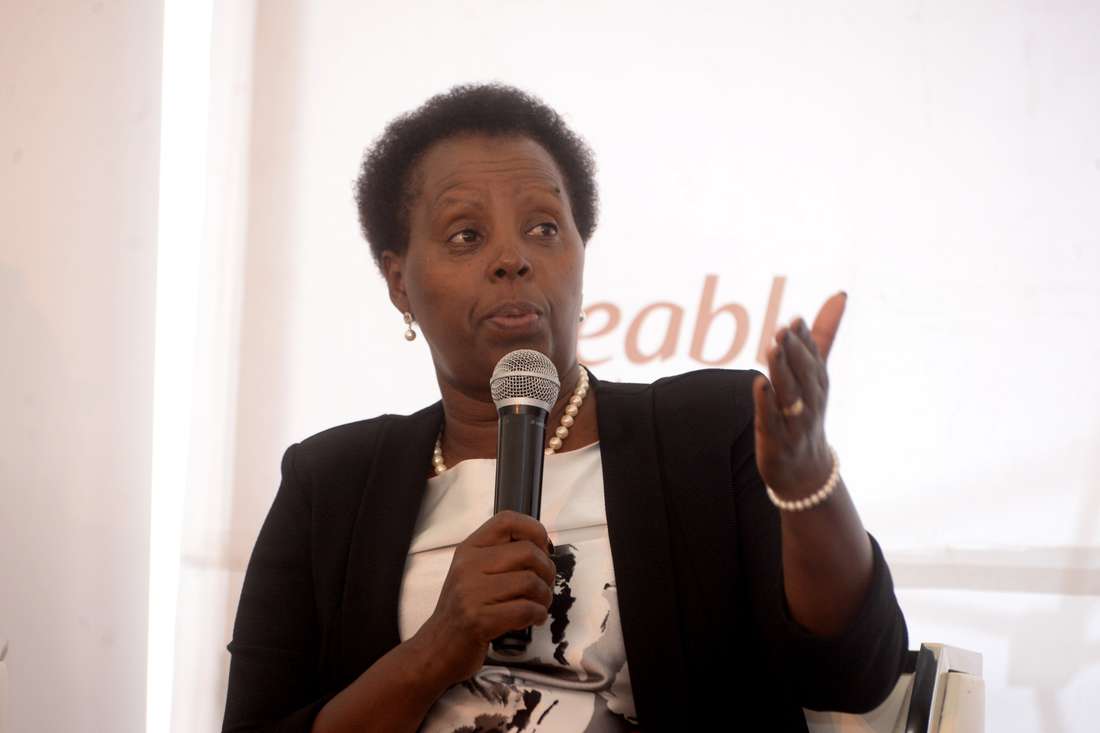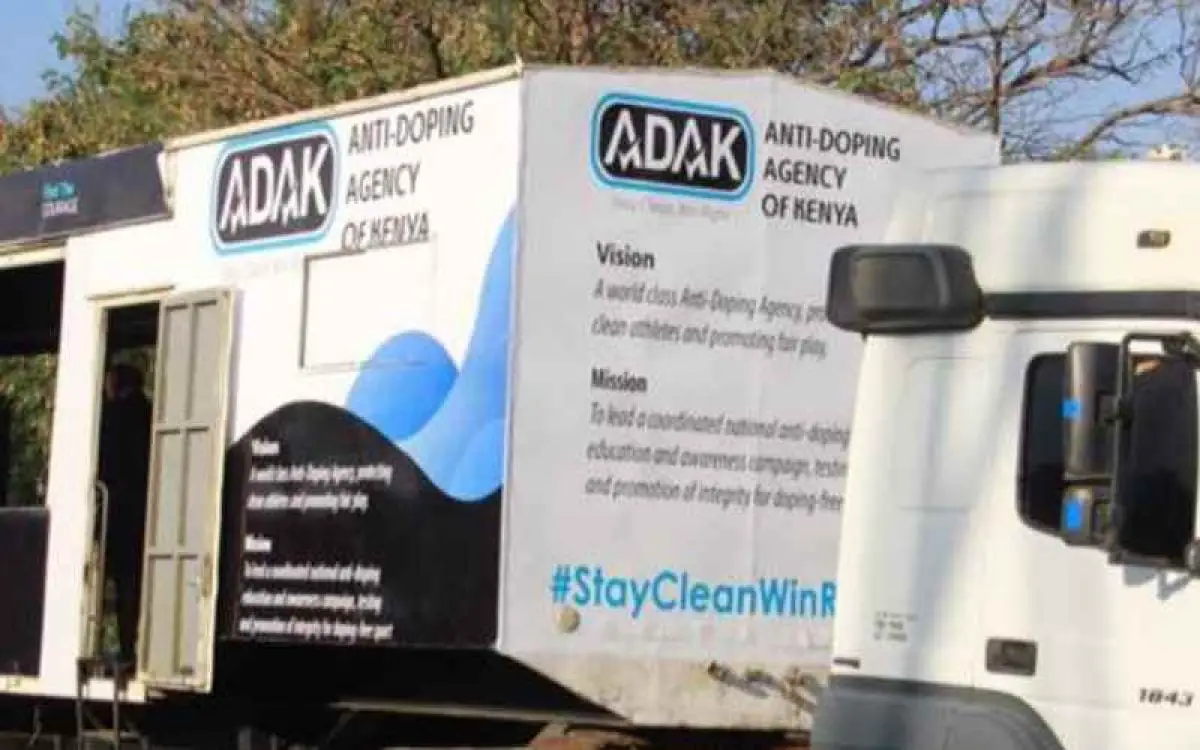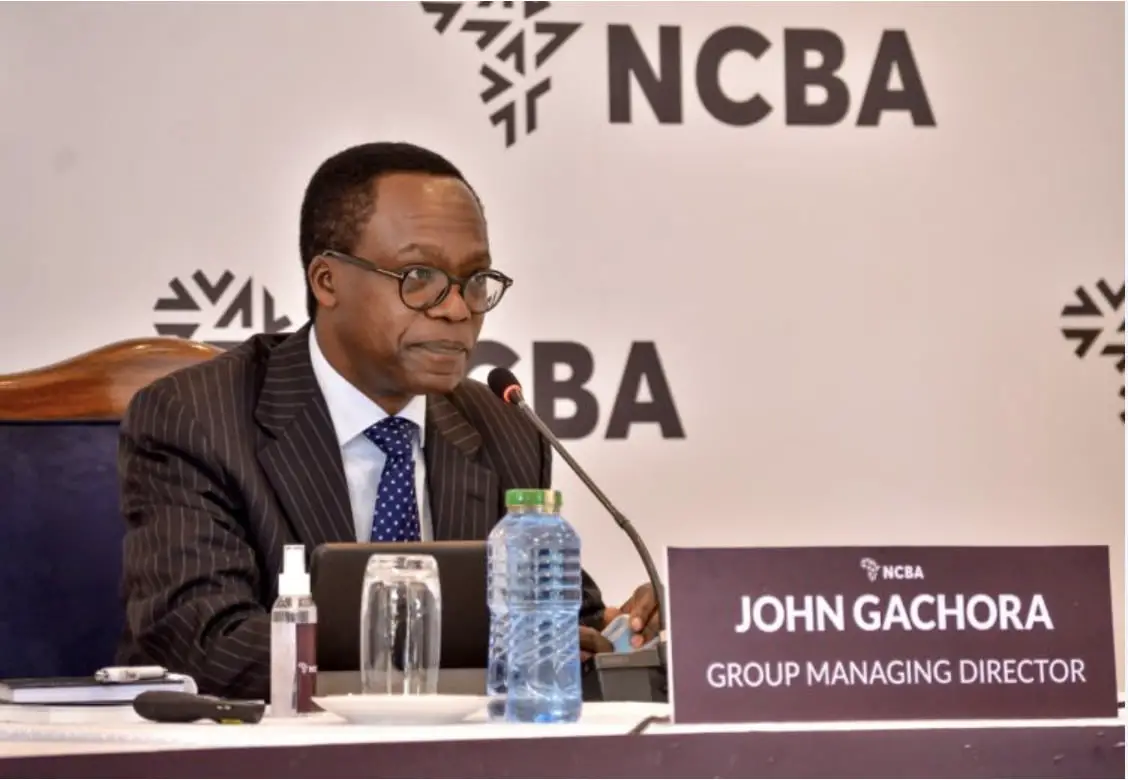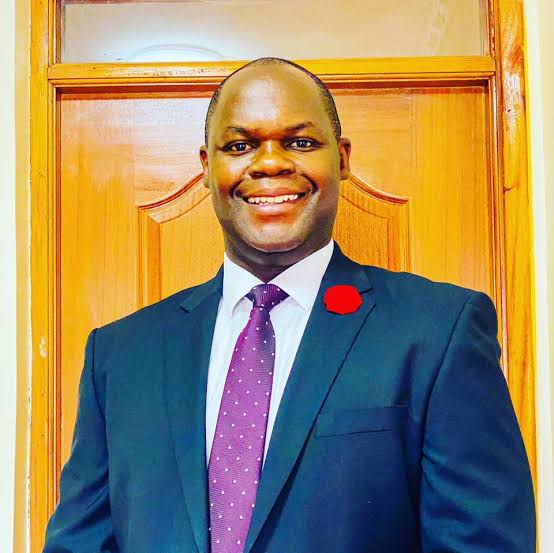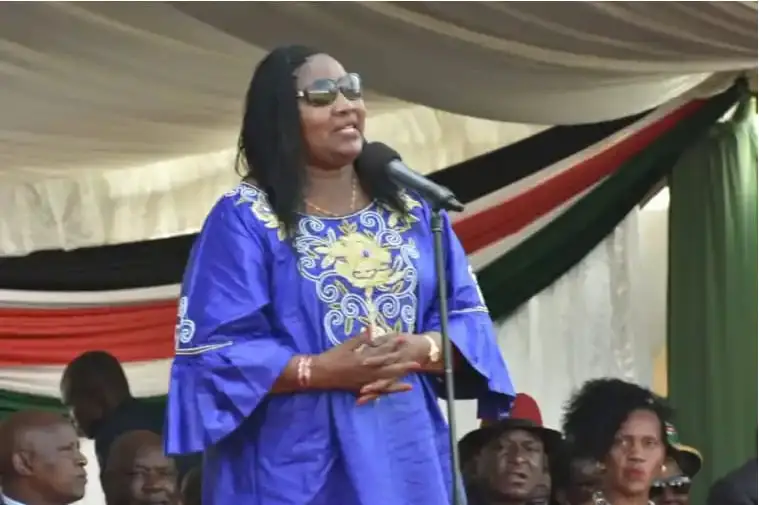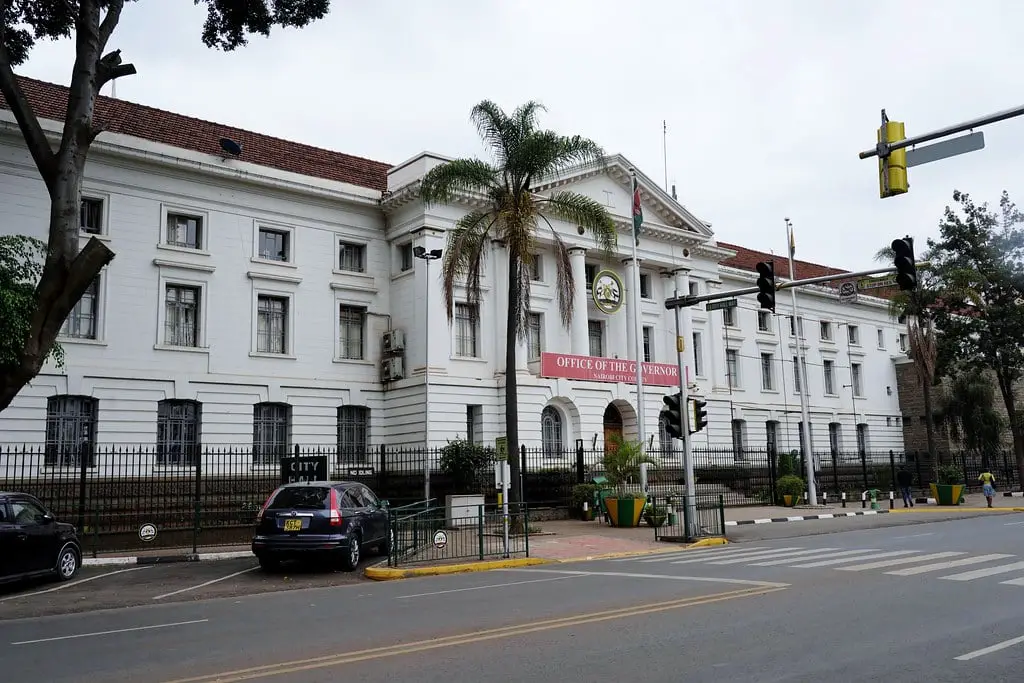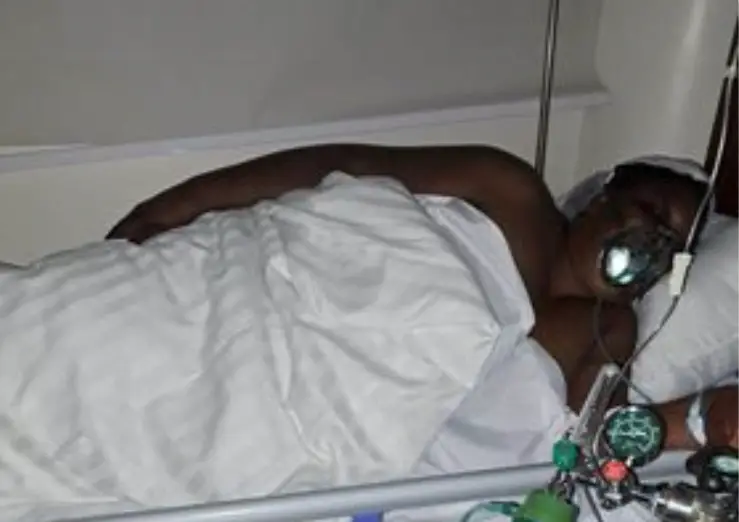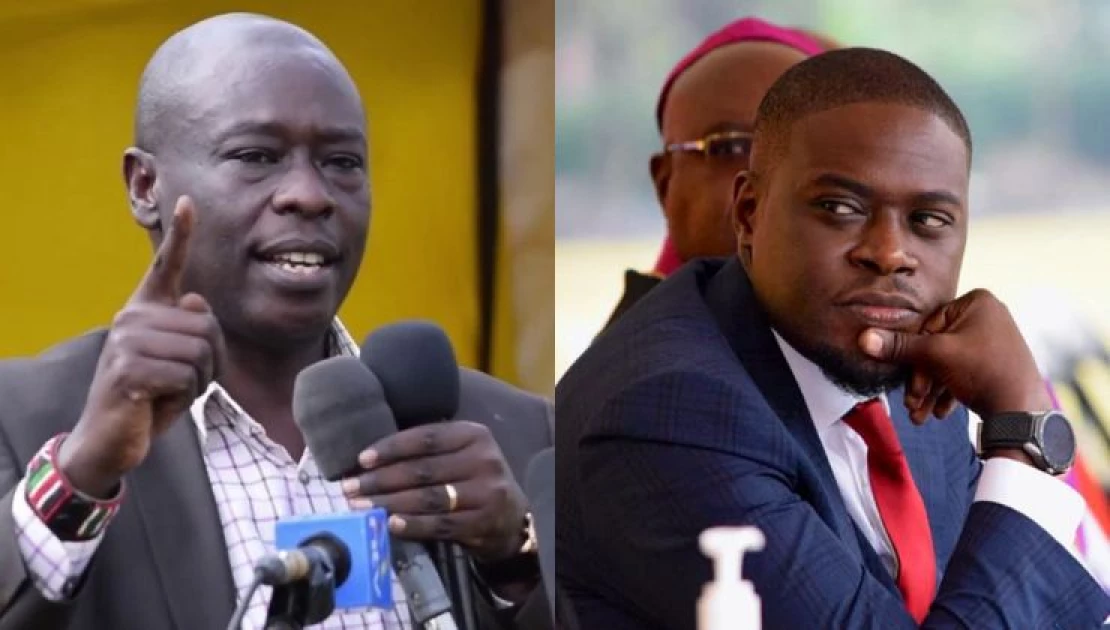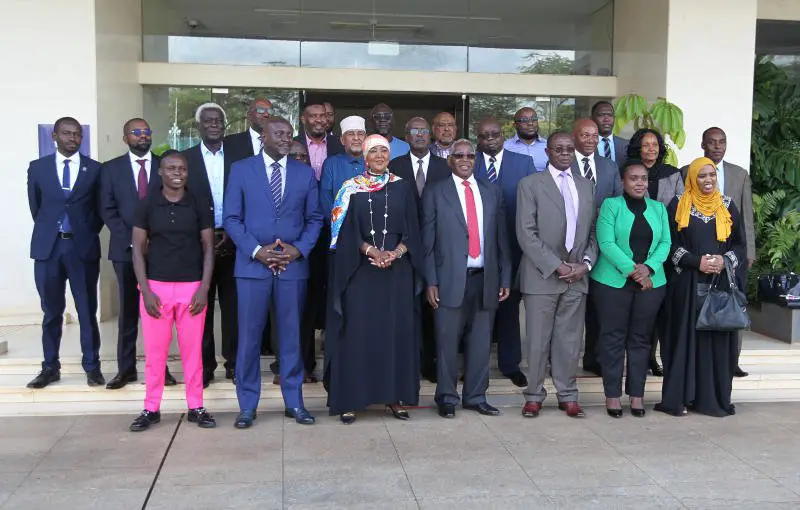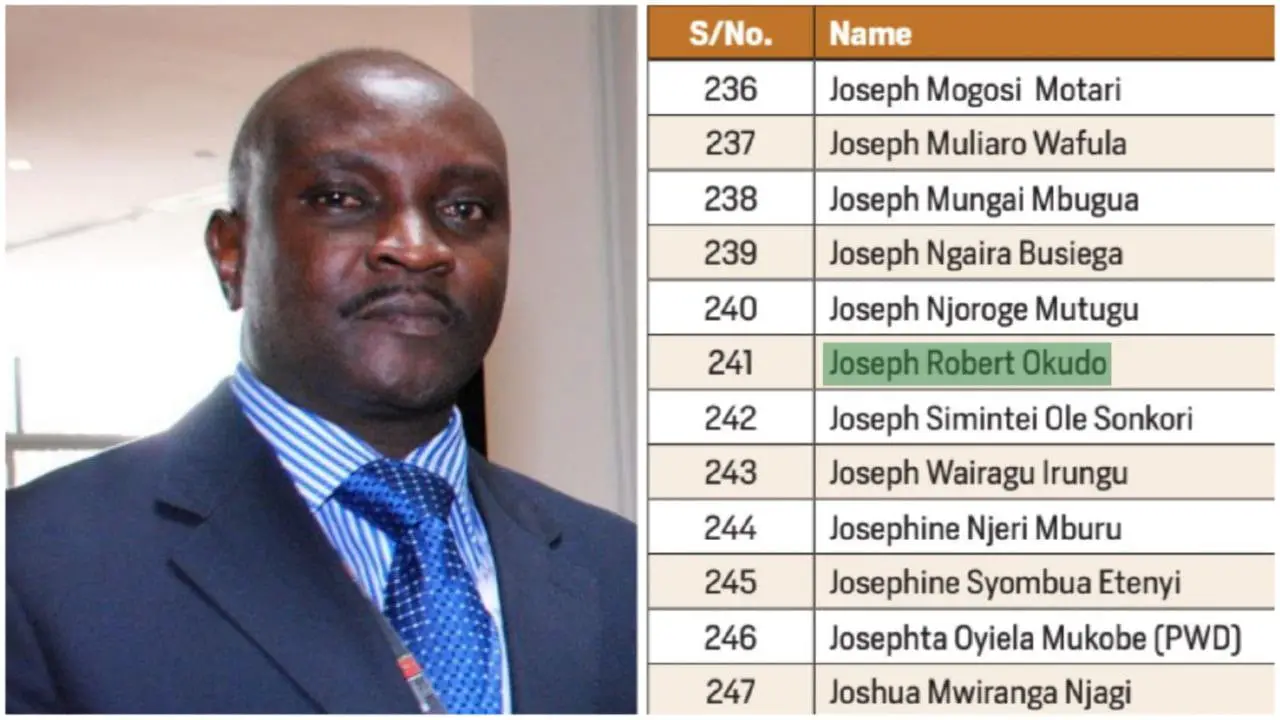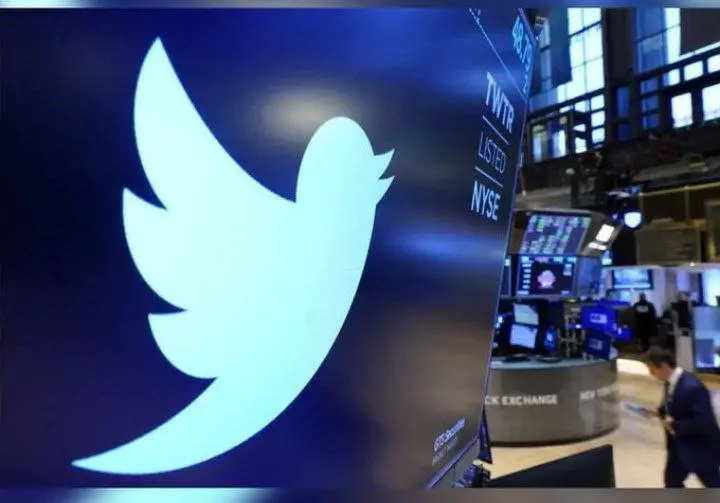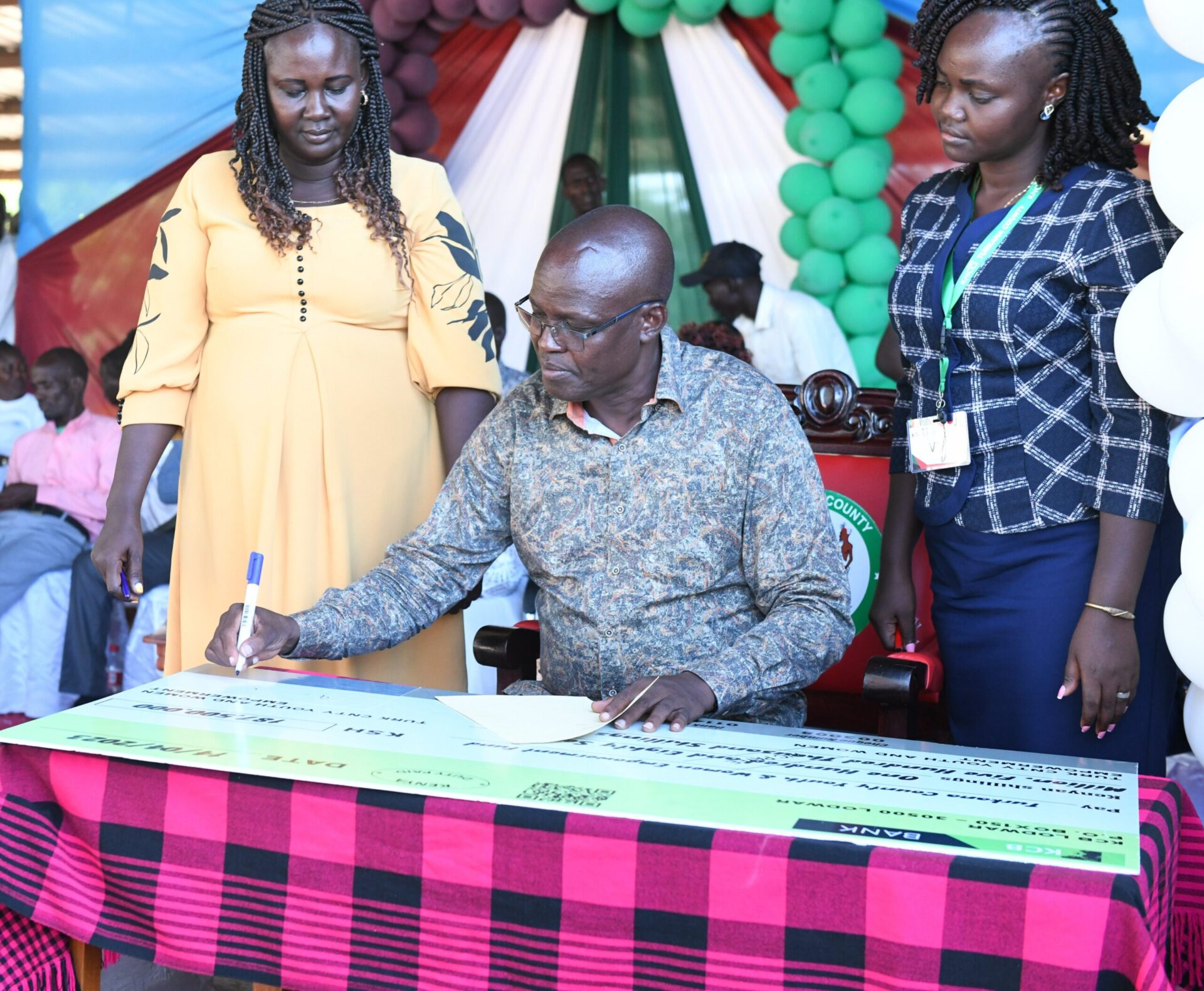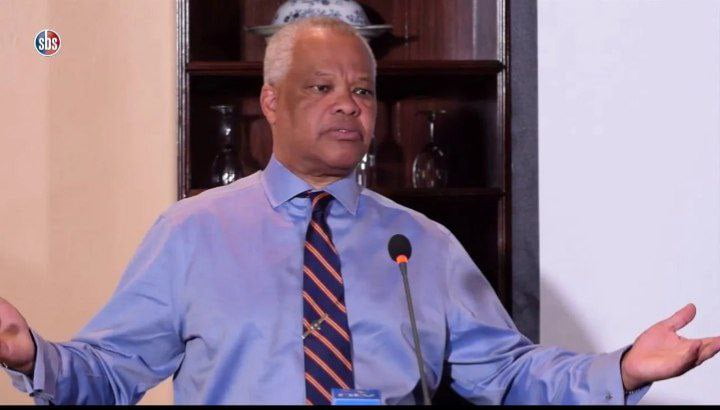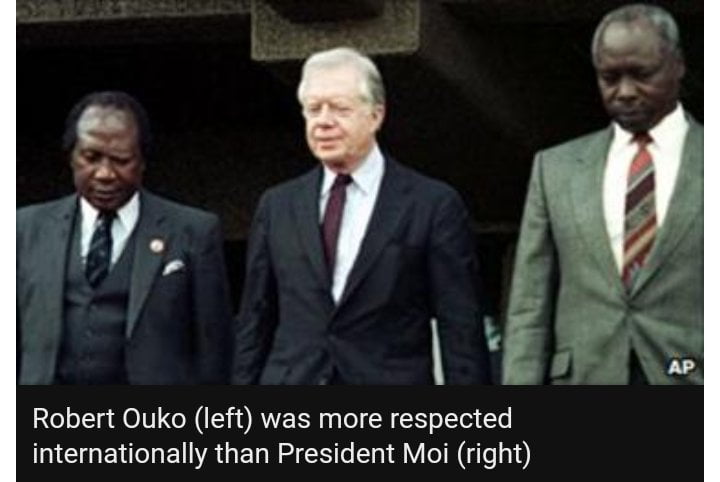
Minister killed in “Operation Bikini succession”, the inside story by a correspondent in Nairobi, as published in the “Weekly Topic” newspaper of Uganda of 6th September 1991 (Reproduced verbatim)
Through errors of omissions and commission the late Kenya’s minister of Foreign Affairs and International Co-operation Dr. Robert John Ouko caused his murder on February 12, 1990.
Ouko’s problems are said to have started in 1983 when he fell out with Hezekiah Oyugi the then Permanent Secretary in the Office of the President in charge of Internal Security and Provincial Administration. Oyugi was then a Provincial Commissioner in Moi’s home province of Rift Valley and was said to enjoy powers beyond even his boss, Permanent Secretary J. Mathenge whom the former later succeeded. Having been business associates in a number of commercial ventures, Ouko and Oyugi parted ways. The immediate consequence was the demotion of Ouko from the glamourous Foreign Office to an obscure Labour Ministry in October 1983. Ouko’s relegation was due to advice from Oyugi, who is the only personality from Nyanza who enjoys Moi’s total confidence.
In the next four-and-a-half years, Ouko was kept “on his toes”. He shuffled around in every reshuffle to ministries of labour, industry and economic planning – an average of a new ministry every 18 months. Meanwhile, Oyugi and his mentor were busy looking for a replacement in Ouko’s Kisumu Rural Constituency. The only man who was ready to challenge Ouko anytime and anywhere was Joab Henry Onyango Omino, a popular former civil servant and a successful businessman-cum-sports administrator. Moi and Oyugi were not ready to back Omino since the latter had the “undesired” qualities of being popular and principled. But while Ouko was unpopular on the domestic front, internationally he had as a career diplomat, cultivated a likeable image and had many useful friends. It was on these friends that his temporary political survival and also his eventual demise would hinge.
Thatcher’s role
As a family friend of the Thatcher’s, Ouko saw his only hope on the assistance of Margaret Thatcher, then British Prime Minister, who had unlimited sway over the Moi government. So, when the election campaigns began and he saw his political coffin being made, Ouko flew to Britain and spent a night as the guest of Dennis and Margaret Thatcher in their country home. The purpose of the visit was to prevail upon Moi to return Ouko. The “Iron Lady”, having her own imperialist designs in Kenya, went beyond what Bob Ouko had asked for. Her country having propelled Moi to presidency and her, personally, having sustained him, Thatcher was once again shopping for Moi’s successor, as the Kenyan dictator is said to suffer from acute leukemia and cancer of the throat. Maggie was also aware that Moi was going to fire his Vice President Mwai Kibaki. She, therefore, not only asked Moi to rig Ouko to parliament, but also to appoint him (Ouko) the Vice President.
Moi complied only partly with the directive. He indeed rigged Ouko back to parliament despite Omino’s landslide victory. As for the number Two slot, the Kenyan President had his own scheme. He was paving a succession path to the presidency for his nephew and long time manager of Moi’s personal estate, Nicholas Kiprono arap Biwott. Instead, Ouko was handed back the Foreign Affairs portfolio. The Number two post went into the hands of Josephat Njuguna Karanja, a former Vice-Chancellor of the University of Nairobi, who had recently been imposed upon the people of Mathare as their Member of Parliament. Karanja’s tenure as the VP was shortlived as he was removed in very humiliating manner only twelve months later. George Kinuthia Muthengi Saitoti, an associate professor of topology and former chairman of the Department of Mathematics at the University of Nairobi was appointed to take over the vice presidency.
Maggie Thatcher and her mentor Ronald Reagan (and later Reagan’s successor George Bush) were not amused by Moi’s refusal to take their orders. They were also not comfortable with Moi’s continued association and reward for people who massively looted public coffers of billions of dollars. Whenever Moi sent Ouko on the numerous begging missions to solicit more aid, the donors showed concern about the diversion of the aid money to foreign secret accounts in Europe. Among the leading looters were Biwott; Saitoti ( who had headed the treasury since 1983); Eric Kotut, the Governor of Central Bank of Kenya (CBK); Kipng’eno arap Ng’eny, the Managing Director of Kenya Posts and Telecommunications Corporation (KPTC); Arthur Magugu, once the Minister for Finance; Bethwel Kiplagat, Permanent Secretary for Foreign Affairs; Benjamin Kipkorir, Chairman Kenya Commercial Bank; Sam Ongeri, Minister for Technical Training; Mark Too (Moi’s son who is Deputy Chairman, Lonrho) and Hezekiah Oyugi, sarcastically known as “the Governor”. As at the end of 1988, estimates by the International Monetary Fund (IMF) showed that more than US $4 billion was held in overseas accounts by Kenyans. Other sources indicated that in the first half of the year 1988, alone, US $175 million was siphoned out of Kenya into foreign accounts. Ouko confronted Moi the facts and that was his error number one. Moi was not amused by this hard evidence. This was in October 1989. Order was immediately issued that Ouko be shadowed round-the-clock.
The Washington ‘debacle’
Things came to a climax when Moi and his team including Ouko visited the US on January 1990. The main purpose of the visit was to persuade President Bush to prevail upon the Congress not to suspend aid to Kenya. The Congress and a number of donor agencies had threatened to freeze assistance to Kenya due to Kenya’s well known record gross violation of human rights, diversion of aid money to individuals’ foreign accounts, corruption and lack of accountability in the government. While in Washington, Moi and his delegation met three congressmen Donald Tayne, Tonny Hall, and Paul Simon in an attempt to persuade them to convince the Congress not to block a US $60 million military aid Moi was soliciting from the US. They also held talks with high-ranking officials of the World Bank and IMF. The talks, however, did not bear much fruit and only ended in Moi being given stiffer conditions to fulfill before any assistance could come forth. A meeting with the US Assistant Secretary of State in charge of African Affairs, Michael Cohen was equally fruitless. Interpreting his president’s public humiliation as a failure on his (Ouko’s) part as a Foreign Affairs Minister, Ouko used his experience in the world of diplomacy to try and arrange a face-saving private meeting between Moi and Bush. In such a meeting, nobody would know whatever transpired between the two Heads of State, and would believe whatever is reported. He, therefore, secured an audience with the US Secretary of State James Baker and managed to persuade the latter to prevail upon President Bush. Ouko was, thus, invited to meet Bush.
The three – Bush, Baker and Ouko – are said to have met for forty minutes before President Bush agreed to grant Moi an audience, in the presence of Baker and Ouko. The meeting took only ten minutes, according to reports. During the ten minute talks, Moi is reported to have been given a number of conditions for continued assistance, including putting someone with knowledge of economics in charge of Treasury as opposed to topologist Saitoti; democratization of Kenya’s politics; release of all political prisoners and improvement of Human Rights record; making Ouko his Vice President as well as ensuring that money smuggled out of Kenya was brought back. Moi was not particularly pleased with the apparent rapport between Bush and Ouko.
After the meeting, Moi addressed a news conference, where he was in-undated with a barrage of what he considered “embarassing” questions like torture of suspects at Nyayo House, mass imprisonment on trumped-up political charges, street shooting by the police, discrimination of ethnic Somali Kenyans, persecution of the clergy and rampant corruption. Moi had no ready answers to these questions. Once again, in a bid to save his boss from public embarassment, Ouko intervened time and again to “elaborate on His Excellency’s self explanatory answer” and articulately, albeit untruthfully, answered the questions. The journalists in attendance were impressed by Ouko’s articulate interventions and, as is typical with American scribes, some remarked that ought to have been the president. That was Ouko’s mistake number two. Moi could not hide his rage. To be upstaged twice in half a day was not something he was accustomed to. Ouko’s other detractors, chiefly Biwott and Oyugi, did not waste away this opportunity.
After that Press Conference of February 2, 1990 Biwott is said to have even sarcastically addressed Ouko as “Your Excellency the President”. Moi on his part emotionally declared that he did not want even to set eyes on Ouko and that he would not travel with his foreign minister in the same plane. Ouko was, thus, left in Washington. Worried by the inexplicable behaviour of his President Ouko took the next flight and arrived in Nairobi two days later, only a few minutes after Moi’s arrival. He infact found Moi still being entertained at the airport and asked his escorts who had come to the airport to meet him to show him where Moi was being entertained (“Kenya Times”, October 23, 1990 page 18). That was Ouko’s third blunder.
Nyanza exile
The following day, February 5, 1990, Ouko went to State House, Nairobi, understandably to plead with Moi to forgive him whatever sins he (Ouko) might have committed. His worry was even more compounded by the fact that upon his arrival at Jomo Kenyatta Airport, his passport was impounded “for adjustment”. Instead of forgiving him, Moi ordered his Foreign minister to go to his Nyanza home and never to appear in Nairobi unless and until called back by Moi personally. Ouko left State House a shaken and confused man and extremely worried. From State House he went to his office along Harambee Avenue via his lawyers, Oraro and Rachier Advocates. From his office, he is reported to have taken his confidential file , bid his staff “Kwaheri ya kuonana” and left. He was convinced that he was going to be relieved of his ministerial post. The same day in the evening, Ouko, his wife and two youngest children went to Moi’s Woodley residence, along Kabarnet Road. He was of the illusion that on seeing his two young children, Moi the “lover of children” Moi have pity. The mission badly aborted and Moi was uncompromising in his decision to send Ouko to Nyanza. Ouko is said to have been silent all the way as he drove his family back from Woodley to his Loresho Home. On arrival at Loresho, he found his driver and one of his security escorts waiting. One of the security escorts, George Otieno, had already been withdrawn. The other two, including driver, Joseph Yogo Otieno were under instruction to leave him as soon as (Ouko) arrives at his home in Nyanza (Nyahera or Koru).
On February 6, 1990 a meeting chaired by Biwott and attended by Saitoti, Kotut, Kipng’eno arap Ng’eny, Noah Too, Frederick Koskei (Saitoti’s Aide de Camp) and Bethwel Kiplagat was held at Midwest Hotel, Kericho. It was at this meeting where the decision to deal with the ‘Ouko problem’ was taken. Noah Too was appointed to head the project. Moi was briefed about the meeting at his Woodley house on February 8 or 9 (Our informant could not get the exact date) in the evening around 9 p.m. Another meeting was held at Nyayo House, Nairobi, 24th Floor on Saturday February 11, 1990 where specific tasks were assigned. It was at this stage that Oyugi, Julius Kobia (the PC Nyanza), John Anguka (the DC Nakuru) and Philip Kilonzo (Commissioner of Police) were indoctrinated into the conspiracy, which had been codenamed “Operation Bikini Succession” – Bikini being Biwott’s initials (BIwott, KIprono, NIcholas). Ouko, meanwhile went to the official residence of Peter Lagat, the Kericho District Commisioner, who is close kin of Biwott’s on February 9 to ask Lagat to plead with Biwott to save Ouko’s neck. He had arrived at the Kericho DC’s house at 7.25 a.m. Lagat phoned Biwott who told him to leave Ouko’s matter alone.
Ouko’s worries multiplied as his earlier attempts to have Oyugi plead with Moi for him had only drawn the remark: “If you have collided with Nyayo, ‘shauri yako’. I give you only two days”. On Saturday February 10, 1990, while officiating at a function organized by Lions Club held at Kisumu’s Imperial Hotel, Ouko attempted to “apologise” publicly by narrating how His Excellency had “articulately” answered Kenya’s critics. Ouko was not a keen church goer. But on Sunday February 11, 1990, he surprised his family when he went with them to AIC Koru church and even asked for special prayers after volunteering to preach. During the week, Ouko had tried to get help from people like Kibaki and Dalmas Otieno, but they were not of much help. He, therefore, decided to fall back on Oyugi – this time asking the latter to provide him with a GK vehicle for his escape. Oyugi promised to oblige – and he indeed came in a white GK mercedes ! Ouko’s mistake number 4 and 5.
Closing In
By Monday February 12, 1990 Ouko was properly isolated and focused on. By the directive from Managing Director Ng’eny, telephone links with Ouko’s Nyahera and Koru home had been cut. His security escort had long been withdrawn and all his movements were closely monitored. Biwott and Kobia had been spotted together in Kisumu that Monday afternoon while Noah arap Too, Frederick Koskei and other high ranking security personnel were seen at Kapkelion in a white Subaru (KTN 865), light blue Volkswagen Kombi (KQC 039) and green Audi (KQC 041). Between 3 and 4 a.m. on Tuesday February 13, a white Mercedes Benz car from the Nyanza PC’s office pulled at the gate of Ouko’s Koru home. The occupants introduced themselves as Security Intelligence officers who had been sent to call Ouko as the president wanted to see him urgently. Within less than 2 minutes there were more than 15 men in GSU uniform at the minister’s gate and all security personnel attached to Ouko had been whisked away. They were severely warned not to “talk”. The only person the abductors forgot to lock up was Ouko’s housegirl, Sebina Were who was sleeping in one of rooms in the main house. She was woken up by an unusual bang as the abductors dragged Ouko away. She rushed out, only in time to see the white car moving out of the main gate.
As he was confronted, Ouko asked his captors, who had told him Moi wanted to see him, for time to change from his pyjamas. Back in his bedroom Ouko wrote down the names of his captors, who included Oyugi, Biwott, Kobia, Koskei and Noah Too. He folded the note and put it behind a wall picture.
Missing genitals
Ouko was driven straight to Nakuru with a brief stop at Kericho, at Shell Petrol Station along the Kericho-Nakuru highway just opposite Kericho Police Station. One motorist who knew Ouko saw him and went greet him. He was immediately chased away but after he had gone close enough to notice that the minister was handcuffed. This man later wrote an “anonymous” letter to Ouko’s Koru address, giving a clue as to how the New Scotland Yard detectives would trace him. Ouko was reportedly killed at Nakuru with a pistol shot after intensive torture. His naked body was later dumped at Nakuru mortuary, with genitals missing. By a twist of fate, a nurse at Nakuru General Hospital, who was a family friend of the Oukos recognised the body and telephoned Christobel, Ouko’s wife. Mrs. Ouko immediately began enquiring from the government about the whereabouts of her husband. Alerted by this enquiry the murderers rushed to the mortuary and removed the body. They sprayed it with highly corrosive chemicals and then flew it in a Police Airwing helicopter for dumping at Got Alila, a few kilometers from the late minister’s home where they “discovered” it two days later. The dumping of the body was done on Wednesday February 14 and the spot remained guarded by GSU personnel until Friday February 16 at 12.30 p.m. when an announcement was made through public address system at the scene that Ouko’s remains had been found.
When this writer visited the scene at 3.00 p.m. he found the police had cordoned the spot and people, including the press, were kept about 20 metres away from the spot. No vegetation was burnt at the spot where the body was found despite the fact that the body was burnt beyond recognition. As Commissioner Kilonzo, Oyugi and Too collected the remains on a stretcher, Oyugi personally lit fire on the spot where the body had been found. Nobody understood the significance of this act but our guess is that the Nyanza butcher wanted to burn the grass and vegetation around that spot to sell the story that Ouko had shot himself and burnt himself there. Two days later, Oyugi issued a what he termed the preliminary findings of police investigations which tended to suggest that Ouko had committed suicide. What followed were massive demonstrations demanding that the truth be told. The government, through Moi himself, promised that “no stone would be left unturned” to bring the culprits to book.
Troons fears
Moi asked the British government to send him detectives from the New Scotland Yard hoping this would lull the people as he bought time for emotions to cool down. Troon (John) the leader of the team and his two colleagues began their work conscientiously briefing the press at every stage. The government was not impressed. Within two weeks of the detectives’ work, the state ordered the Scotland Yard sleuths not to issue any more press statements. Later, Troon felt he could not proceed further without interviewing Biwott. On three occasions when they had appointments with the Energy minister, Biwott simply failed to turn up. Meanwhile, through the British High Commission, Kenya was asking Mrs. Thatcher to prevail upon the New Scotland sleuths to write their report without mentioning “sensitive” personalities. Mrs. Thatcher is reported to have been reluctant to help in this, fearing the consequences should the British people know. After several attempts to interview the ‘Kabarak Syndicate’ failed the British detectives saw no option other than packing their bags and returning home. Troon refused to come to Nairobi to deliver his incomplete report unless he was guaranteed of his security as it was rumored both in Nairobi and London that the “Kabarak Syndicate” was planning for him an “accident” the Kenya style.
As soon as the report was delivered to Attorney General Mathew Guy Muli, the government announced that the report was not to be made public. This was a 180-degree turn from the earlier assurances that the government had nothing to hide and would make the entire report public. To appease people – or so the Nairobi regime deludes itself – Moi has appointed a Commission of Inquiry to inquire into the “mysterious disappearance and subsequent death” of minister Ouko. Another attempt at diverting people’s attention from the truth behind Ouko’s murder was the arrest and torture of Ouko’s younger brother, Barrack Easton Mbajah, a former District Commissioner for allegedly murdering his brother.
Ouko it would therefore seem fell victim to the bloodthirsty murderers of the Nairobi regime.
Source of story: The “Weekly Topic” newspaper of Uganda of 6th September 1991
Archived and posted on Facebook by Michael Mundial Kamau

